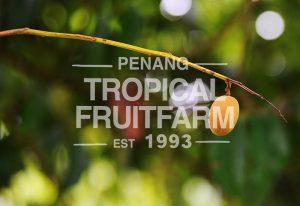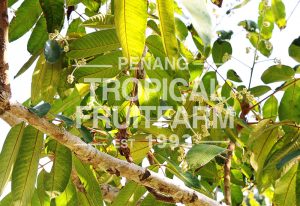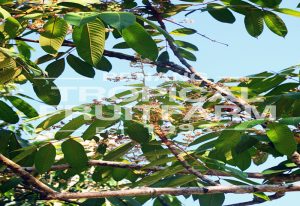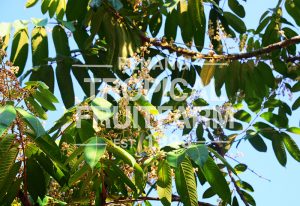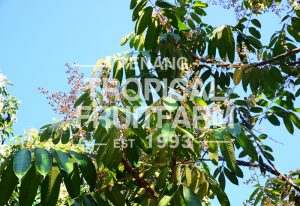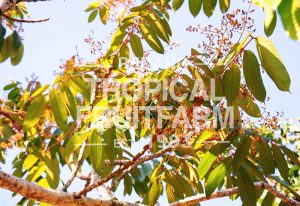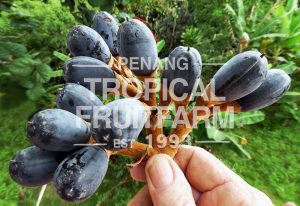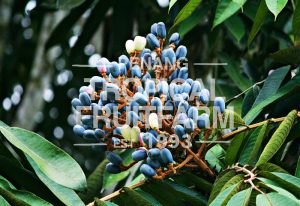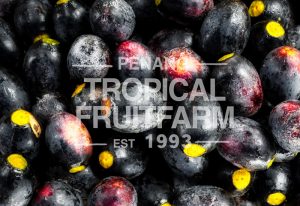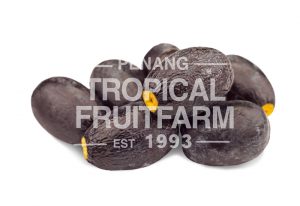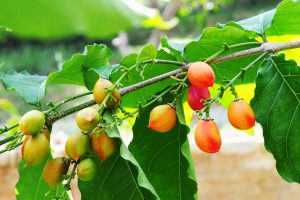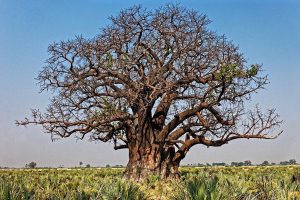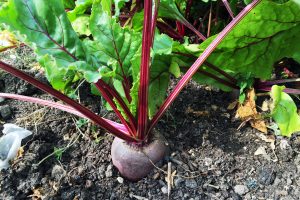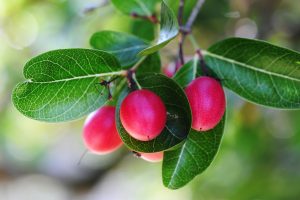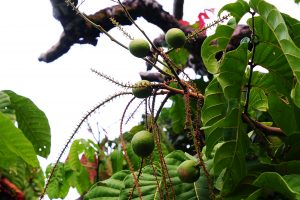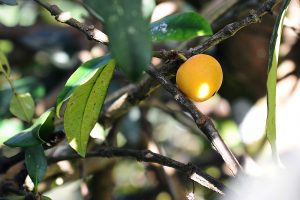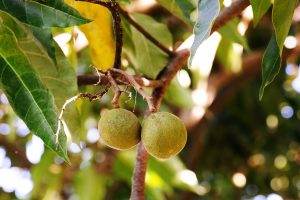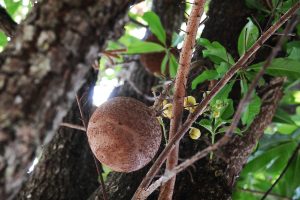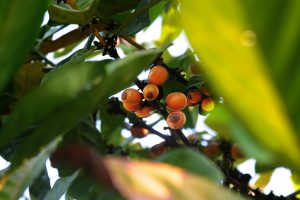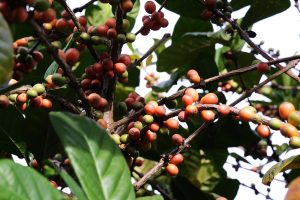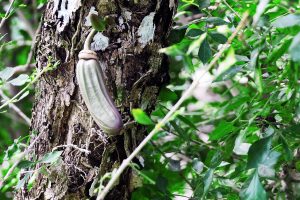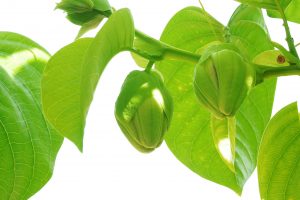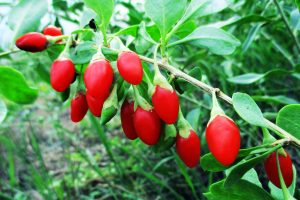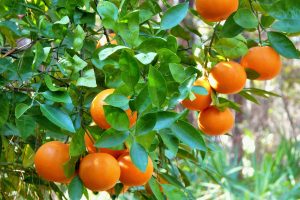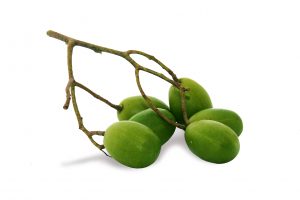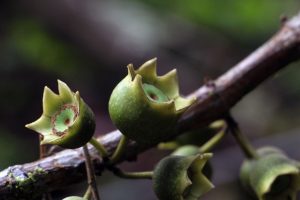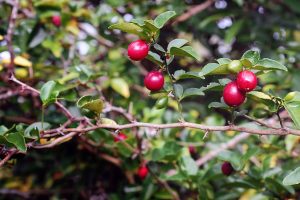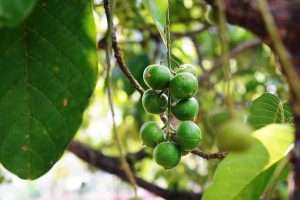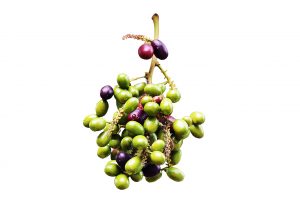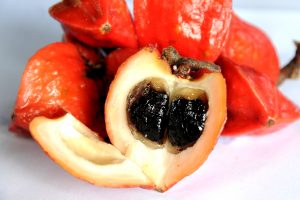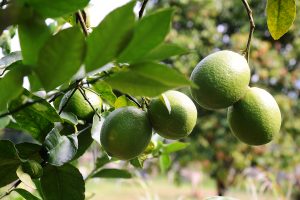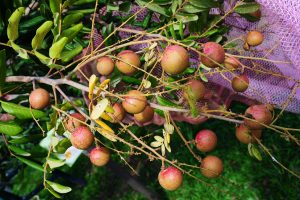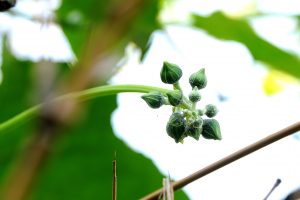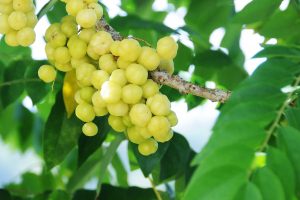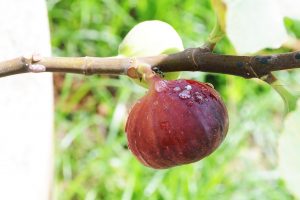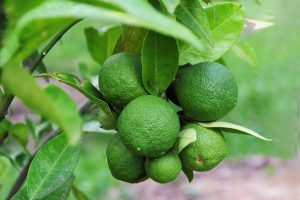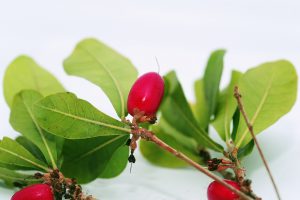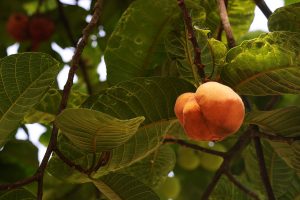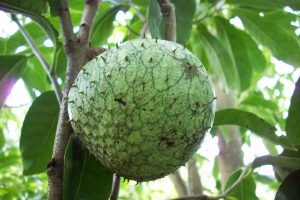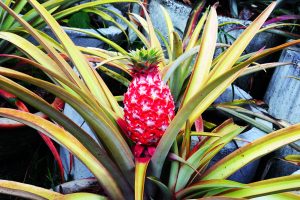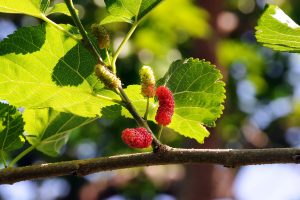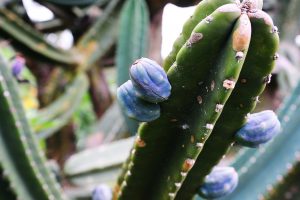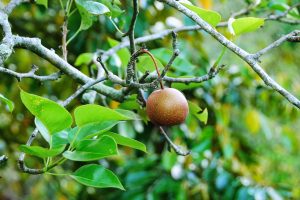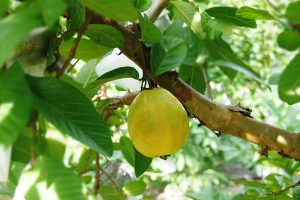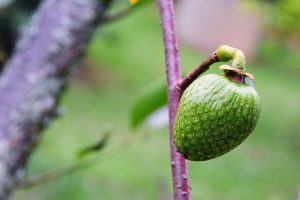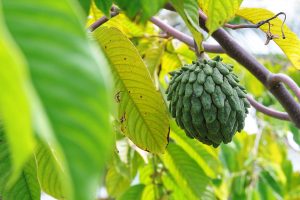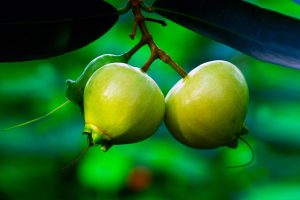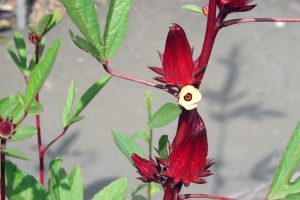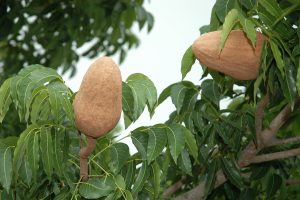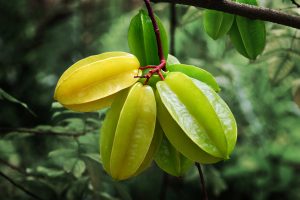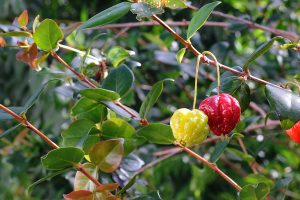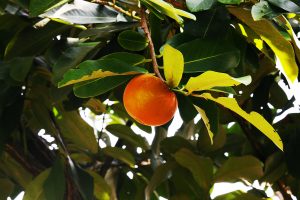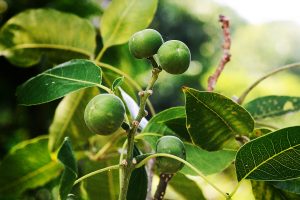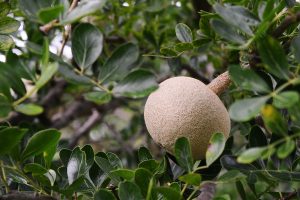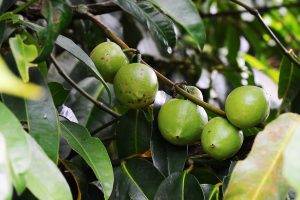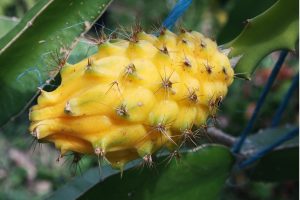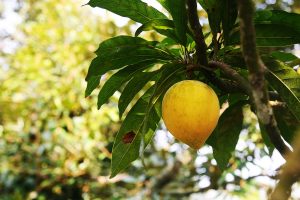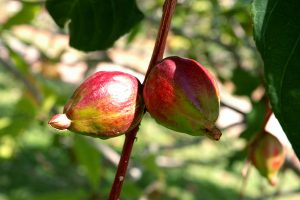| Origin | Betel nut originally grew wild in Southeast Asia perhaps in the Philippines or Malaysia. They were brought to the Indian subcontinent by humans in prehistoric times. |
| Description | Betel nut is an erect, unbranched palm reaching heights of 12-30m, depending upon the environment conditions. The stem, marked with scars of fallen leaves in a regular annulated form, becomes visible only when the palm is about 3 years old. |
| Growth Habitat | Betel nut thrives in areas of high rainfall. Although tolerant to moderate elevations on mountains, it generally does best in low altitudes. Being a shade-loving species, betel nut always does well when grown as a mixed crop with fruit trees. |
| Foliage | Betel nut is an evergreen plant with imparipinnate leaves. They are mid-green and lanceolate with entire margins. |
| Flowers | The flowers are cup-shaped and pale yellow and are arranged in panicles. Flowers are unisexual, with both male and female flowers borne in the same inflorescence. |
| Fruits | The fruits are hard, ovoid, red-orange coloured. They possess a fibrous mesocarp and a thin woody endocarp enveloping one seed. |
| Harvest | Harvesting usually involves a person climbing a palm, though in India in some areas they have trained monkeys to harvest the fruit. Immature nuts are chewed in their entirety and picked when nuts are still succulent and this usually occurs when nuts are 2-3 month old. Mature nuts are harvested 8-9 months after flowering when the entire kernel has become hard and husks have turned bright yellow to orange when mature. |
| Soil | The betel nut palm prefers moist soil with excellent drainage and a moist tropical climate. Soil should be deep to ensure a well-developed root system with high organic carbon content and a pH range from acidic to neutral. |
| Pruning | Betel nut is never pruned because it grows a solitary stem that grows straight up. Mature fronds are shed after 2 years. Betel nut palm is considered a “self-pruning” palm species. |
| Fertilization | Dried chicken manure and composted plant remains are prime sources of organic matter and micronutrients, such as iron and zinc. Mulching with organic materials such grass or tree prunings can help maintain soil moisture, halt erosion, and slowly add nutrients to the soil. |
| Propagation | Betel nut is exclusively seed propagated. Seed nuts are allowed to ripen completely on the tree and then dried in the sun for 1-2 days before sowing 2.5cm apart in shallow pits. |
| Nutritional Properties | Per 100g, the nutritional value of betel nut is: - 339kcal - 5.2g Protein - 10.2g Fat - 56.7g Carbohydrates - 19mg Thiamine/B1 - .52mg Riboflavin/B2 - 1.1mg Niacin/B3 - 76mg Sodium - 450mg Potassium - 400mg Calcium - 89mg Phosphorous - 4.9mg Iron |
| Health Benefits | Its leaf contains anti-platelet and anti-inflammatory properties. Such properties may in fact help heart disease patients. The leaves also contain vitamin C and calcium, along with oil containing antiseptic properties. When powdered, it’s a carminative agent. Betel nut is prescribed as a treatment for dysentery, tapeworms, and roundworms. Fishermen in Chennai spit betel nut onto wounds from Octopus. The betel nut aids constipation, bloating, edema, and is a vermifuge that expels intestinal worms. The antioxidant content of betel nut prevents cellular degeneration. Its leaves may treat back pain and arthritic pain Some findings show that betel nut may provide relief for sufferers of schizophrenia Studies indicate that betel nut might help stroke sufferers with improved speech, bladder control and muscle strength Studies show betel nut may remedy ulcerative colitis Betel nut’s antibacterial properties may assist with dental health. It used to be an ingredient in toothpaste for this reason |
| Commercial Uses | The nuts are chewed, usually wrapped in betel leaves, along with some lime and spices for flavoring. The seed is used medicinally in numerous internal and external preparations. The husks, shoots, buds, leaves and roots also have local medicinal uses. The tough leaf bases are used in hats, inner soles for slippers and is an excellent paper pulp source. The leaf sheaths and spathes are used as wrapping and as a substitute for cardboard packing material. Fat from the betel nut is used as an extender for cocoa butter. |
| Food Suggestion | Mushroom Betel Nut Rice Curry Ingredients: - Mushroom- 1 pocket - Betel nut (raw)- 1 tablespoon - Green peas- 1 cup - Rice- 300 grams - Onions- 2 - Tomatoes-2 - Green chillies-2 - Ginger- 30 grams - Garlic- 20 grams - Oil- 50ml - Ghee- 50ml - Coriander leaves- 2 sprigs - Fennel- 1 tablespoons - Mustard seeds- ½ tablespoons - Curry leaves- 1 sprig - Turmeric powder- 1 pinch - Chili powder- 1 tablespoon - Coriander powder- 1 tablespoon - Salt Method of preparation: 1.Heat oil and ghee in a vessel, then splutter mustard seeds and fennel. 2.Add fried onions, curry leaves, ginger, garlic paste, sauté well. 3.Add sliced tomatoes, green chilies, chili powder, salt and sauté well. 4.Add raw betel nut, mushroom, green peas, cook well. 5.Add water and allow it to boil. 6.Add soaked rice, coriander leaves and allow it to cook. |

